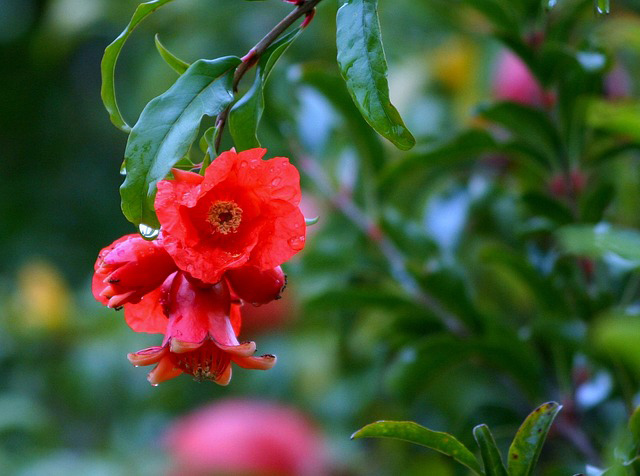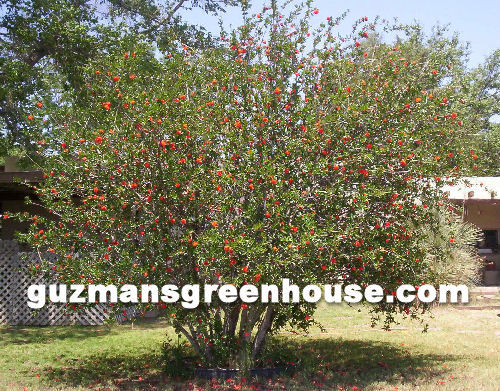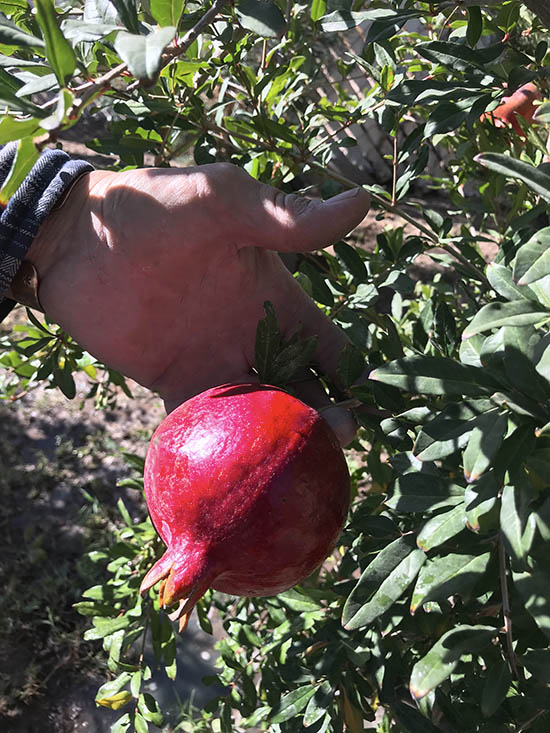
Pomegranate Tree Southwest

The Pomegranate tree (Punica granatm ‘Wonderful’) is an excellent fruit tree for the Southwest USA. It does provide great vitamin C-type fruit. It is deciduous (loses leaves in winter) in the southwest. And according to many online and offline gardening experts, it is considered a “Super Food” rich in vitamins and antioxidants. It is a drought-tolerant fruit tree that responds well to pruning and can be used as an ornamental tree.
Growing Pomegranate Trees
Are you considering a new addition to your garden? Pomegranate trees might be the perfect choice. These vibrant, fruit-bearing trees are not only visually pleasing but also pack a punch when it comes to health benefits. From their juicy seeds to their rich antioxidant content, pomegranates are both delicious and nutritious. Growing your own can be a rewarding experience, adding a unique touch to your garden or yard.

The Pomegranate Flower
It will bloom bright beautiful orange-like blooms in early spring that will become a large delicious edible fruit. It will grow to about 25ft. tall and 15ft. wide. Plant them in the front yard for a spectacular show of orange flowers in early spring.

Optimal Growing Conditions
Ensuring your pomegranate trees thrive starts with understanding their basic needs. Like all plants, they have a few must-have conditions to flourish.
Sunlight Requirements
Pomegranate trees love the sun. For healthy growth and maximum fruit production, place them where they’ll receive full sun throughout the day. Aim for at least 6 to 8 hours of direct sunlight. Think of sunlight as their secret energy drink—vital for growth and fruit development.
Soil Preparation and Type
Next up is the soil. Pomegranates aren’t too picky, but they do best in well-drained loamy soil. Aim for a slightly acidic to neutral pH range, around 5.5 to 7. If your soil isn’t perfect, don’t worry. Mixing in some compost can significantly improve the texture and fertility. Start with a clean slate, and your pomegranates will thank you with lush growth and sweet fruits.

Where do Pomegranate trees grow?
Just about any place where they can get lots of sun and plenty of water. Their growing USDA zone is 7-11. They like a warm semi-arid climate which is perfect for the southwest landscape. Plant them in full sun, however, they can tolerate some shade preferably afternoon shade. It’s important to note that they will need at least 6 hrs. of full sun anything less than that and you will have less fruit.
Soil Preparation and Type
Next up is the soil. Pomegranates aren’t too picky, but they do best in well-drained loamy soil. Aim for a slightly acidic to neutral pH range, around 5.5 to 7. If your soil isn’t perfect, don’t worry. Mixing in some compost can significantly improve the texture and fertility. Start with a clean slate, and your pomegranates will thank you with lush growth and sweet fruits.
Planting and Care Tips
Once you’ve nailed the basics of light and soil, it’s time to plant and nurture those pomegranate trees.
The dwarf variety is a showy shrub that is planted in a container of any size. It is deer resistant and only gets about 3-4ft. tall. The blooms are spectacularly bright. It is a showy shrub that will look good in a decorative container. It is deer resistant and only gets about 3-4 ft. tall. The blooms are bright orange and a spectacular sight during the spring seasons. Learn more about the dwarf pomegranate at monrovia.com.
- Pink Satin Pomegranate
- Ambrosia Pomegranate
- Wonderful Pomegranate (mentioned at the beginning of this article).
Identifying Ripe Pomegranates
Wondering how to know when your pomegranates are ready? Look for fruits that are vibrant in color and have a slight gloss. Ripe pomegranates feel heavy for their size and sound metallic when tapped. The shape will also become a bit squared off rather than round, signaling peak ripeness.
Culinary Uses for Pomegranates
Pomegranates are versatile in the kitchen. Their tart yet sweet seeds enliven salads, yogurt, and desserts. You can sprinkle them over oatmeal or blend them into smoothies. For a refreshing twist, try adding them to cocktails or mocktails. The possibilities are endless, and their rich flavor will elevate any dish.
When to plant Pomegranate?
Spring is a great time to plant your pomegranate tree. It will take a few years before it will start producing a good harvest. They will normally ripen in about September. Do not let them over-ripen as this will also make them split. Mid-fall is when the pomegranate fruit is ready to harvest.
Planting several in a row will provide a nice border to keep traffic or people from entering the area. The large branches and stems appear to have large thorns.
Problems with the Pomegranate tree
It is a hardy tree and is disease and insect-resistant. It loves the dry hot season, especially in the Southwest.
Alternaria fruit rot will attack the Pomegranate fruit but typically happens where there is ample rainfall. If this does occur on your tree a copper fungicide will alleviate the problem. Learn more about diseases and insects on plants.
Why do Pomegranate fruit split
One of the main reasons is inconsistent watering. They like to be watered same time every day. Also, flood watering all at once can also cause the fruit to split. Temperature fluctuations can do the same.
It is important to use a good drip watering system that will give water to your tree evenly every day during the growing seasons.
Conclusion

Growing pomegranate trees rewards you with both beauty and bounty. With the right care, they’ll flourish and provide delicious fruits that are as delightful to look at as they are to eat. So why not give it a try? Dig a little, plant a tree, and enjoy the sweet taste of your labor. Your garden will never be the same.
